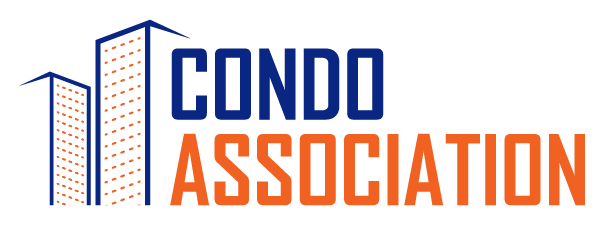Risk management is the process of planning and implementing policies that will help decrease the possibility of accidental financial and physical loss to the community association. Several types of losses can occur in a community, namely, property, liability, income, and personnel. Theft, fire, wind, flood, and other catastrophes, including hurricanes, tornadoes, and hail storms, can cause property losses. Injury to another person or to another person's property are considered liability exposures. Income exposures, by comparison, are unsound financial practices such as fraud, embezzlement, and loss of rent resulting from a covered loss of an association-owned unit. Injuries received while on the job for the community association and claims of improper employment practices are personnel losses.
• Importance of securing and maintaining insurance
The purchase of insurance allows the community association to transfer the financial burden of paying for losses to a third party, namely, the insurance company. Requirements for securing insurance policies for the community association are defined in state statutes and governing documents. Mortgage companies and secondary mortgage markets such as FNMA, FMLC, and VA also require developers to include insurance mandates in community association governing documents to ensure that their investments are protected.
To protect the association against these potential losses, the board should consider all available insurance coverages through a bidding process. Typically, an association purchases a "commercial package policy" (CPP) that includes many property and liability coverages "packaged" together. Several are highlighted herein because they may be of particular importance or may be overlooked when purchasing insurance:
For property coverage, the board should choose a deductible that is affordable, but will yield a reasonable premium. In the current insurance environment, typical community association property insurance deductibles range from $5,000 to $10,000, and perhaps higher in areas susceptible to hurricanes or earthquake damage. If a higher deductible is selected to obtain a lower premium, the community association should create an operating reserve account or budget a separate line item or contingency category to accommodate a possible large financial burden caused by one loss or several losses in the same year.
When purchasing property insurance, be sure to request replacement cost coverage and not actual cash value (ACV). Just as it sounds, replacement cost coverage will pay to completely replace a covered item, such as a roof, at current costs, no matter its age. On the other hand, ACV depreciates the item so the association would receive payment based on the age of the roof. For example, if the roof is nearing the end of its useful life-perhaps it's 18 years old, and the life of the shingles is 20 years-ACV coverage would pay the association only a very small fraction of the amount needed to rebuild the roof.
Building ordinance insurance includes the following three coverages for property that is impacted by building code changes and possible condemnation due to a partial loss. None of the coverages duplicates those under the property insurance policy, so we urge all Associa-managed communities to include this policy in their insurance program.
If there is significant damage to most of the building, the municipal building department may condemn the entire structure, which requires demolition of the undamaged portion. Property insurance pays for the demolition of the damaged structure, but extra demolition coverage pays for the demolition of the undamaged portion of the building.
Contingent liability provides the funds necessary to rebuild the demolished but undamaged portion.
Finally, increased cost of construction coverage pays for the increased cost of building code changes, such as wider doorways, hard-wired smoke alarms, fire suppression systems, and approved roof material.
Building code changes can occur as often as each year, so building ordinance insurance is a very important coverage, especially as community associations age. Property insurance restores the building to its original condition, regardless of its age. Increased cost of construction coverage updates the building to comply with the current building code.
Electronic data processing insurance is a property coverage of more recent vintage. It covers information technology exposures such as computer equipment, networks, websites, security systems, and protection from hackers.
The following policies comprise the liability side of the CPP policy:
Commercial general liability (CGL) is a policy that covers damage to the property of others. If, for example, association employees are painting a building, and some of the paint overspray lands on an owner's vehicle, CGL will cover the damage to the vehicle. CGL also provides coverage for certain bodily injuries, such as if a guest trips over a sprinkler head and twists an ankle.
Personal injury coverage protects the association against slander (verbal defamation), libel (written defamation), and defamation of character, such as if a community association posts a list of delinquent accounts on the bulletin board against the community manager's advice.
Advertising injury covers instances such as an association's plagiarizing a newspaper or magazine article or publishing an article in the community newsletter without first obtaining written approval from the author or publisher.
Hired and non-owned automobile liability covers vehicles owned by others, but used for association business. If, for example, the association's newsletter editor is in an accident while driving to a print shop to copy the newsletter, hired and non-owned automobile liability insurance would cover the damage to the other car and any injuries to its occupants, but not to the editor's vehicle or injuries to its occupants. The editor's personal car insurance policy would cover that.
Directors and officers liability (D&O) insurance covers any wrongful acts of the board of directors and volunteer leaders. Some state statutes mandate D & O coverage and include minimum limits of coverage for community association boards. It is sometimes included, in a more limited form, as a rider with the package policy. Because D&O does NOT cover intentional wrongdoing or deliberate breach of fiduciary duty, however, it is absolutely essential that board members act in the best interest of the association at all times.
We urge board members to purchase a separate D&O policy with the broadest limits available. While board members may believe that they do not need D&O coverage because they don't expect to make a mistake, an owner still could sue for a perceived injustice. D&O, as well as most other liability policies, would pay to defend the association and the board as long as the board as a whole and the board members individually acted in the best interests of the association at all times.
Commercial umbrella liability insurance provides excess coverage above most of the other liability policies. For example, the commercial general liability policy provides $2,000,000 of coverage, and the association's governing documents require, or industry best practices recommend, a minimum of $10,000,000 in coverage. The association could obtain an umbrella policy of $8,000,000 so if the $2,000,000 limit is exceeded by court award or settlement, then the umbrella liability policy would pay the difference up to the limits of the policy. Umbrella liability insurance is more reasonably priced than a general liability policy because its underwriters gamble that any award or settlement will not exceed the general liability policy limits.
Fidelity insurance protects the community association against employee dishonesty that may lead to theft, fraud, or embezzlement of association money, securities, or property. The coverage should insure all persons who handle or have access to funds, regardless of whether they are paid, such as board members, committee members, volunteers, community manager, and management company employees.
Even if the management company has fidelity coverage of its own (and professional management companies do), the policy covers only the management company's funds. The association's fidelity insurance policy should have a rider, or endorsement, that extends coverage to the management company.
Workers compensation insurance is usually required by state statute and provides coverage for employee work-related injuries and death. Even if the community association does not have employees, it is wise to purchase a "minimum value" workers compensation policy to cover contractors' employees who may work on-site on behalf of the association, but the contractor allowed his coverage to lapse. A minimum value workers compensation policy is inexpensive, but very necessary, protection for the community association.
Employer liability insurance is a must if the association has any employees. It covers instances of alleged wrongful termination, sexual harassment, and other employment-related issues.
• The bidding process
How do you determine the limits of coverage? Certainly not by using the same old numbers from previous policies! The only way to ensure that the community is insured adequately is to hire an insurance appraiser or Reserve Specialist® to determine the insurable replacement cost of the common elements and buildings for which the association is responsible. Replacement cost appraisals should be conducted at least every five years to keep up with inflation and increased construction costs. Check your association's governing documents and state statutes for legal requirements that impact community association insurance
Source: Association Times
 Purchasing condo association insurance is one of the most important buying decisions the board will make. The decision addresses risk management and must meet or exceed any insurance requirements mandated by the state and the HOA's governing documents.
Purchasing condo association insurance is one of the most important buying decisions the board will make. The decision addresses risk management and must meet or exceed any insurance requirements mandated by the state and the HOA's governing documents.